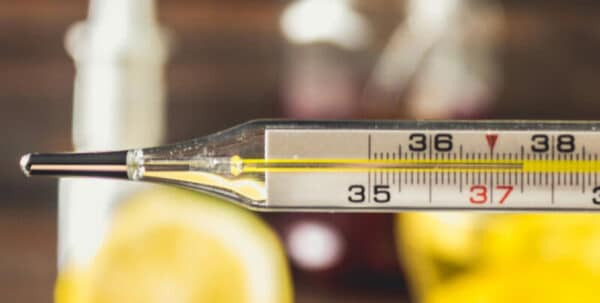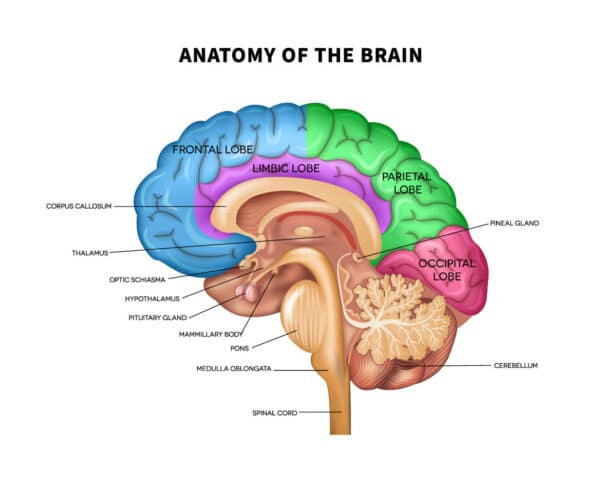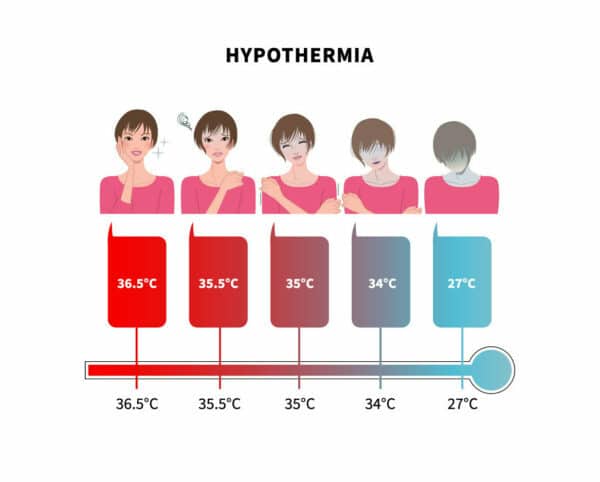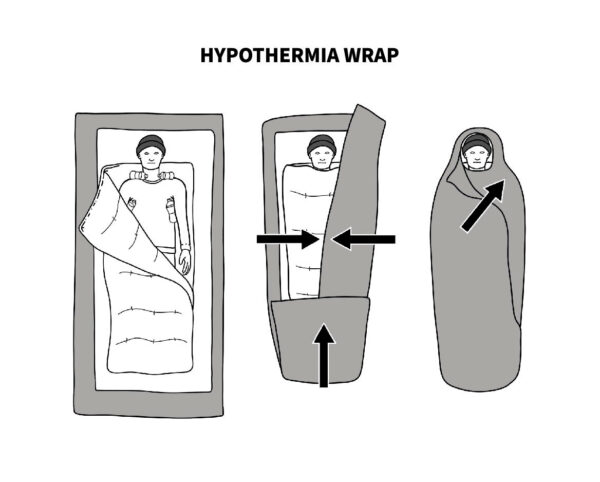Join us at the International Thermal Conductivity Conference (ITCC) and the International Thermal Expansion Symposium (ITES).
June 17, 2024
June 4, 2024
May 4, 2021
May 25, 2021
September 26, 2019
October 30, 2019

December 9, 2020
Humans are scientifically classified as endotherms which means that our body temperature is regulated internally and held at a consistent temperature regardless of what the surrounding environmental temperature is. For most individuals, this ideal body temperature is roughly 37.5°C. Body temperatures that fall outside of this range can compromise the function and efficiency of organs potentially leading to them shutting down completely. Hypothermia is defined as a dangerous drop in body temperature that is frequently caused by a prolonged exposer to cold temperatures. This occurs when the body begins to lose heat faster than it is being produced. A long exposer time to cold temperatures can quickly deplete the body’s stored energy which will result in a lower internal temperature.

Hypothermia is a serious illness that is often disregarded as not being life threatening and precautionary measures are often not taken as seriously as they should be. Between 2003 and 2013, more then 13,400 people died from hypothermia in the United States according to the Centers for Disease Control and Prevention (CDC). Body temperatures that are too low can seriously impact the brain leading to the victim becoming unable to think clearly or move their body well. The part of the brain that controls body temperature is called the hypothalamus. When the hypothalamus recognizes a change in body temperature it initiates a response to help bring the internal temperature back into a safe range. Humans produce heat internally through metabolic processes in cells to support vital body functions. Most of this internally produced heat is expelled through the skins surface by multiple heat transfer methods including evaporation, conduction, convection and radiation. When the body becomes cold it will start to shiver in an effort to promote muscle activity and generate more heat, however, if this method is not effective, the body will lose more heat and the core temperature will start to fall even further. When this occurs, blood starts to be redirected away from extremities and targeted towards vital organs such as the kidney, heart, lungs and brain. The heart and brain are the most sensitive to low temperatures so electrical activity in these organs will start to drop dramatically if the exposer to colder temperatures continues. If the body temperature falls too much, these vital organs will have no choice but to start to fail and could ultimately lead to death.

The level of harm that can be inflicted on the body depends on the degree of hypothermia that the individual is experiencing. Mild hypothermia is characterized by a body temperature between 32.5 – 35°C. An individual experiencing mild hypothermia will display symptoms that include high blood pressure, shivering, rapid breathing and heart rate, constricted blood vessels, fatigue and lack of coordination. Moderate hypothermia patients display a body temperature between 28 – 32.2°C and show symptoms such as irregular heart beat (slower), lower levels of consciousness, dilated pupils and a decrease in reflexes. Hypothermia is classified as severe when the patient has a body temperature below 28°C and is exhibiting signs including labored breathing, nonreactive pupils, heart failure, pulmonary edema and cardiac arrest. This individual may also become unaware of their surroundings and actions due to a change in mental consciousness.

An individual experiencing any degree of hypothermia should seek medical attention immediately. If medical assistance is delayed or unavailable there are a number of treatments for hypothermia that all aim to raise the core body temperature back to a sustainable level. It is important to get the hypothermic individual into a warm room or shelter as well as having all wet clothing removed. A hypothermic person should not be exposed to a hot bath, electric blanket or given any caffeinated or alcoholic beverages as these could damage the skin and potentially trigger irregular heartbeats possibly leading to cardiac arrest. Instead, it is important to wrap the entire body in a warm blanket, including the head and consume warm beverages such as soup or herbal tea. It is crucial to monitor the breathing patterns of a hypothermic individual and to carry out CPR if breathing stop. An interesting property than many insulating materials have in common are their low thermal conductivity values. Materials such as wool and cotton exhibit low thermal conductivities that result from their inability to transfer heat. This restriction of heat flow caused by these materials will keep an individual wearing wool or cotton warmer because less body heat is being lost to their surrounding environment. Dressing in multiple layers of clothing that ideally has a low thermal conductivity is an excellent preventative measure to take to decrease the risk of hypothermia.
Countless additional measures can be taken to prevent a risk of hypothermia even if exposer to cold temperature is inevitable. It is ideal to heat most rooms of a house to at least 20°C and if going outside during the winter ensure you are dressed in layers (preferably low thermal conductivity materials) with a waterproof layer as the outermost one. A major misconception about hypothermia is that the outside temperature must be extremely cold for an individual to start exhibiting symptoms, however, this is not the case. If the temperature is even just slightly below 4.4°C and a person is wet, they can develop hypothermia within only an hour. Even in a pool that is kept at 26°C a person that is spending an extended period of time in that water may be at risk of hypothermia.

A study published in 2018 showed that 75% of people who received treatment in New York City Hospitals for cold related illnesses were outdoors when the symptoms started to appear. Around half were sleeping and 25% had no heating in their homes. People dealing with substance abuse, mental or other physical health conditions are at an increased risk for hypothermia. Other cause includes metabolic disorders that can result in a low basal metabolic rate and cause the body to generate less heat internally. Exposer to toxins and dysfunction of the thyroid, adrenal or pituitary glands may also be an underlying cause. Hypothermia can also be a useful medical treatment tool that can assist a patient’s recovering from cardiac arrest. Cardiac arrest causes the heart to stop beating and once it starts again health care providers will use a cooling device that will lower the patient’s body temperature for a set period of time. The body temperature is normally lowered to between 32-34°C and held there for roughly 24 hours. Lower body temperature after a cardiac arrest episode can significantly reduce the chances of the individually having permanent brain damage.
Hyperthermia is the opposite of hypothermia and can be defined as a group of heat related conditions that are characterized by an abnormally high body temperature. An individual is diagnosed with hyperthermia when they display a body temperature above 37.5 – 38.3°C. The main causes of hyperthermia include dehydration, use of certain medicine, cocaine and amphetamines or alcohol abuse.
A constant internal temperature is crucial to maintaining a healthy and fully functioning body. Any deviation from an internal temperature of 37°C can have the potential to seriously impact multiple organs even causing them to completely shut down. Both hypothermia and hyperthermia are illnesses classified by a dramatic change in body temperature and can cause an individual to experience a variety of harmful symptoms. These illnesses should be taken seriously and preventative measures should always be put in place to ensure that an ideal body temperature is being maintained.
Author: Kallista Wilson | Junior Technical Writer | Thermtest
Hypothermia: Symptoms, treatment, and stages. (n.d.). Retrieved September 13, 2020, from https://www.medicalnewstoday.com/articles/182197
Hypothermia|Winter Weather. (2019, February 08). Retrieved September 13, 2020, from https://www.cdc.gov/disasters/winter/staysafe/hypothermia.html
Therapeutic Hypothermia After Cardiac Arrest. (n.d.). Retrieved September 13, 2020, from https://www.hopkinsmedicine.org/health/treatment-tests-and-therapies/therapeutic-hypothermia-after-cardiac-arrest
Images:
Figure 1: Photo by Olya Detry from Shutterstock, ID 1141107308. Retrieved from https://www.shutterstock.com/image-photo/banner-glass-mercury-thermometer-high-temperature-1141107308
Figure 2: Photo by Tefi from Shutterstock, ID 28417866. Retrieved from https://www.shutterstock.com/image-vector/human-brain-lobes-beautiful-colorful-illustration-284175866
Figure 3: Photo by Seesawname from Shutterstock, ID 299124533. Retrieved from https://www.shutterstock.com/image-vector/hypothermia-299124533
Figure 4: Photo by Baedr-9439 on Wikimedia Commons. Retrieved from
https://commons.wikimedia.org/wiki/File:Hypothermia-wrap.png